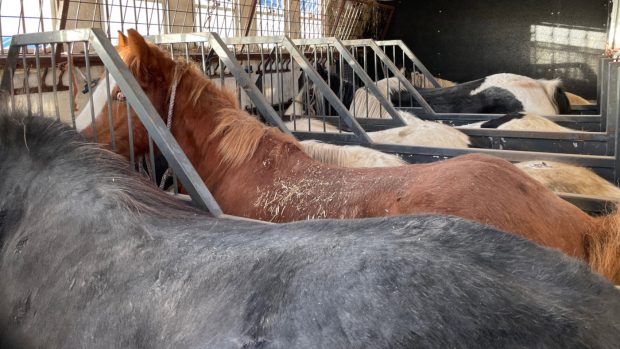The International League for the Protection of Horses (ILPH) is undertaking pioneering research into the effects of long-distance travel on horses.
Little scientific evidence exists detailing how horses react to long journeys, says Joanne White of the ILPH. What little research there is relates to horses that are used to travelling, such as competition horses.
So the charity, which is campaigning for an end to long journeys to slaughter for 100,000 horses each year in Europe, has commissioned its own six-month investigation, to assist its campaigns.
From next spring, experts will monitor horses travelling between Romania and Italy for the meat market, as they leave or at the end of their journey, which can take four days.
“Transport to slaughter is worlds apart from transportation of sport horses,” said Miss White. “This investigation of horses destined for slaughter will be the first in Europe.”
European regulations, which came into force on 5 January this year, demand improvements for horses travelling to slaughter, including the provision of single partitions in boxes, rest breaks and avoiding mixed age or sex groups.
But an ILPH field team in Romania last summer found that not one lorry seen at the rest stations complied with the new rules. As a result the horses the team found were suffering with dehydration, exhaustion and injuries.
“The ILPH wishes to obtain scientifically valid evidence of the impact on the welfare of horses being transported for slaughter over long distances under the new EU regulation,” said Miss White.
The charity has also launched a new campaign — Make a Noise — asking its members and supporters to put transport to slaughter back on the political agenda, with profile-raising events and contact with MPs and MEPs.
This news story was first published in Horse & Hound (25 October, ’07)




